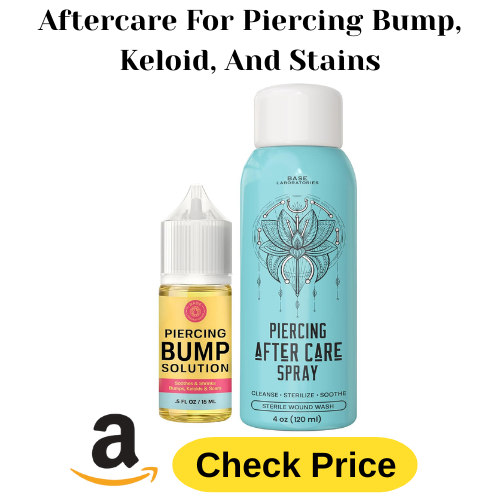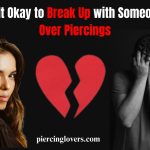Lip piercing is a form of body modification where a small hole is made in or around the lip area to insert jewelry. This practice has grown in popularity as a means of self-expression, allowing individuals to showcase their unique style and personality. In this article, we’ll explore what is lip piercing called, the different types available, the piercing process, how to care for a new lip piercing, potential risks, and more.
Types of Lip Piercings
There are several types of lip piercings, each with its own unique style and placement. Understanding the different options can help you decide which one best suits your personality and aesthetic.
- Labret Piercing: Positioned just below the center of the bottom lip, this is one of the most common lip piercings.
- Monroe Piercing: Named after Marilyn Monroe, this piercing is placed above the upper lip on the left side, mimicking her famous beauty spot.
- Madonna Piercing: Similar to the Monroe piercing but located on the right side of the upper lip.
- Medusa Piercing: Situated in the philtrum, the indentation just above the center of the upper lip.
- Snake Bites: Comprising two piercings on either side of the lower lip, giving the appearance of snake fangs.
- Angel Bites: Similar to snake bites but located on either side of the upper lip.
- Vertical Labret: A single piercing that goes through the bottom lip vertically, exiting out the top of the lip.
The Lip Piercing Process
The process of getting a lip piercing is relatively straightforward but should always be performed by a professional in a sterile environment to minimize risks. Here’s a step-by-step overview:
- Consultation: Discuss your desired piercing with a professional piercer. They will explain the different types, placement options, and jewelry choices.
- Preparation: The piercer will clean the area around the lip thoroughly and mark the exact spot where the piercing will be made.
- Piercing: Using a sterilized needle, the piercer will create the hole in the marked spot. The chosen jewelry is then inserted into the hole.
- Aftercare Instructions: The piercer will provide detailed aftercare instructions to ensure the piercing heals properly and to avoid infections.
Aftercare For A Lip Piercing
Proper aftercare is crucial for the healing process and to prevent infections. Here are some essential tips:
- Cleaning: Clean the piercing twice daily with a saline solution. Avoid using alcohol or hydrogen peroxide, as these can dry out and irritate the skin.
- Hygiene: Wash your hands thoroughly before touching the piercing. Avoid unnecessary touching or playing with the jewelry.
- Dietary Considerations: Avoid spicy, hot, and acidic foods that can irritate the piercing. Also, refrain from drinking alcohol and smoking, as these can slow down the healing process.
- Hydration: Drink plenty of water to help your body heal and maintain healthy skin.
Potential Risks Of Lip Piercing
While lip piercings can be a stylish addition, they come with potential risks that should be considered:
- Infection: If not properly cared for, piercings can become infected. Signs include excessive redness, swelling, pain, and discharge.
- Swelling and Pain: Some swelling and pain are normal after getting pierced, but excessive symptoms could indicate an infection or allergic reaction.
- Allergic Reactions: Some individuals may have allergies to certain metals used in jewelry. Opt for hypoallergenic materials like titanium or surgical steel to reduce this risk.
- Damage to Teeth and Gums: Constant contact between the jewelry and teeth or gums can cause erosion, damage, and even lead to gum recession or tooth chipping.
Frequently Asked Questions
Q: What is lip piercing?
A: Lip piercing is a type of body modification where a small hole is made in or around the lip area to insert decorative jewelry. It is a popular form of self-expression and can be done in various styles and placements.
Q: Does getting a lip piercing hurt?
A: Pain levels can vary from person to person, but generally, getting a lip piercing involves some discomfort. The actual piercing process is quick, and most people describe the pain as a sharp pinch that subsides quickly.
Q: How long does it take for a lip piercing to heal?
A: Healing time can vary depending on the individual and the type of lip piercing, but most lip piercings take about 6 to 8 weeks to heal completely. Proper aftercare is essential to ensure a smooth healing process.
Q: What types of jewelry are used for lip piercings?
A:Common types of jewelry for lip piercings include labret studs, captive bead rings, and circular barbells. It’s important to choose jewelry made from hypoallergenic materials like surgical steel, titanium, or niobium to reduce the risk of allergic reactions.
Q: Can I eat and drink normally after getting a lip piercing?
A:While you can eat and drink after getting a lip piercing, it’s best to avoid spicy, hot, and acidic foods and drinks for the first few weeks as they can irritate the piercing. Stick to soft foods and be sure to rinse your mouth with a saline solution after eating.
Q: How should I clean my lip piercing?
A: Clean your lip piercing twice a day using a saline solution. Avoid using alcohol or hydrogen peroxide, as they can be too harsh and dry out the skin. Always wash your hands before touching the piercing.
Q: What are the risks associated with lip piercing?
A: Risks include infection, allergic reactions to jewelry, swelling, pain, and potential damage to teeth and gums. Proper aftercare and choosing high-quality jewelry can help minimize these risks.
Q: Can I change my jewelry soon after getting a lip piercing?
A: It’s advisable to wait until the piercing is fully healed before changing the jewelry. This usually takes about 6 to 8 weeks. Changing the jewelry too soon can cause irritation and delay the healing process.
Q: What should I do if my lip piercing gets infected?
A: If you notice signs of infection such as excessive redness, swelling, pain, or discharge, it’s important to seek advice from your piercer or a healthcare professional. Do not remove the jewelry, as this can trap the infection inside.
Q: Can I get a lip piercing if I have sensitive skin or allergies?
A: Yes, but you should choose hypoallergenic materials for your jewelry, such as titanium, surgical steel, or niobium, to minimize the risk of an allergic reaction. Discuss any skin sensitivities with your piercer beforehand.
Q: Will a lip piercing leave a scar?
A: Most lip piercings will leave a small scar if the jewelry is removed and the piercing closes. The visibility of the scar can vary depending on individual healing processes and how long the piercing was in place.
Q: How do I know if my piercer is qualified?
A: Ensure your piercer is experienced and operates in a clean, sterile environment. Look for certifications, read reviews, and ask to see their portfolio. A reputable piercer will also be willing to answer any questions you have about the process and aftercare.
Final Words
Lip piercing is a trendy and versatile form of body art that allows individuals to express their unique style. With various types and placements to choose from, there’s a lip piercing for everyone. However, it’s important to approach the decision carefully, ensuring you select a professional piercer and follow proper aftercare procedures to minimize risks and promote healing. By understanding the process, types, aftercare, and potential risks, you can make an informed decision and enjoy your new piercing safely.




